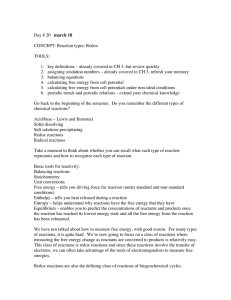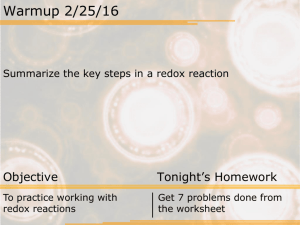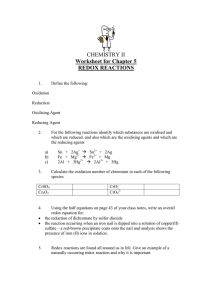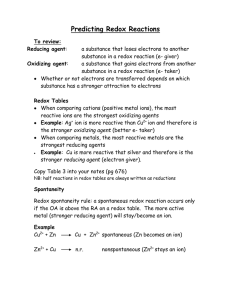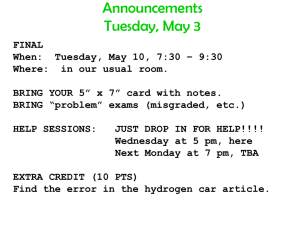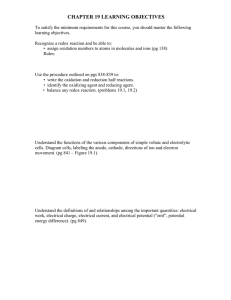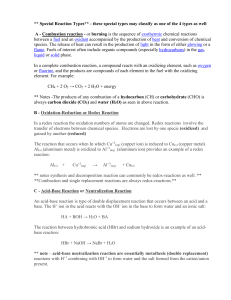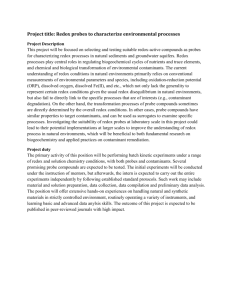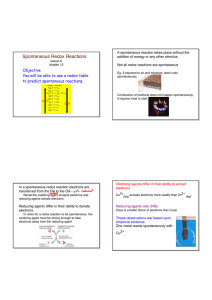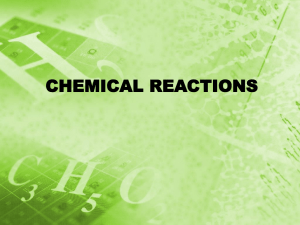Some Real-Life Examples of Redox Reactions in Action
advertisement
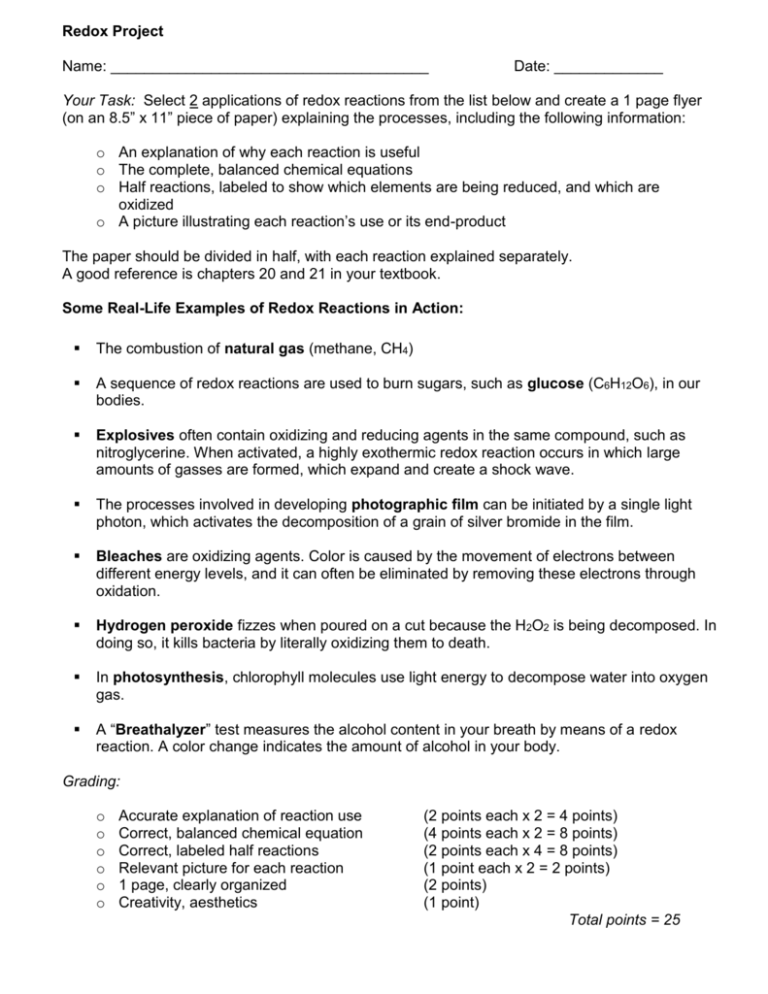
Redox Project Name: ______________________________________ Date: _____________ Your Task: Select 2 applications of redox reactions from the list below and create a 1 page flyer (on an 8.5” x 11” piece of paper) explaining the processes, including the following information: o An explanation of why each reaction is useful o The complete, balanced chemical equations o Half reactions, labeled to show which elements are being reduced, and which are oxidized o A picture illustrating each reaction’s use or its end-product The paper should be divided in half, with each reaction explained separately. A good reference is chapters 20 and 21 in your textbook. Some Real-Life Examples of Redox Reactions in Action: The combustion of natural gas (methane, CH4) A sequence of redox reactions are used to burn sugars, such as glucose (C6H12O6), in our bodies. Explosives often contain oxidizing and reducing agents in the same compound, such as nitroglycerine. When activated, a highly exothermic redox reaction occurs in which large amounts of gasses are formed, which expand and create a shock wave. The processes involved in developing photographic film can be initiated by a single light photon, which activates the decomposition of a grain of silver bromide in the film. Bleaches are oxidizing agents. Color is caused by the movement of electrons between different energy levels, and it can often be eliminated by removing these electrons through oxidation. Hydrogen peroxide fizzes when poured on a cut because the H2O2 is being decomposed. In doing so, it kills bacteria by literally oxidizing them to death. In photosynthesis, chlorophyll molecules use light energy to decompose water into oxygen gas. A “Breathalyzer” test measures the alcohol content in your breath by means of a redox reaction. A color change indicates the amount of alcohol in your body. Grading: o o o o o o Accurate explanation of reaction use Correct, balanced chemical equation Correct, labeled half reactions Relevant picture for each reaction 1 page, clearly organized Creativity, aesthetics (2 points each x 2 = 4 points) (4 points each x 2 = 8 points) (2 points each x 4 = 8 points) (1 point each x 2 = 2 points) (2 points) (1 point) Total points = 25
